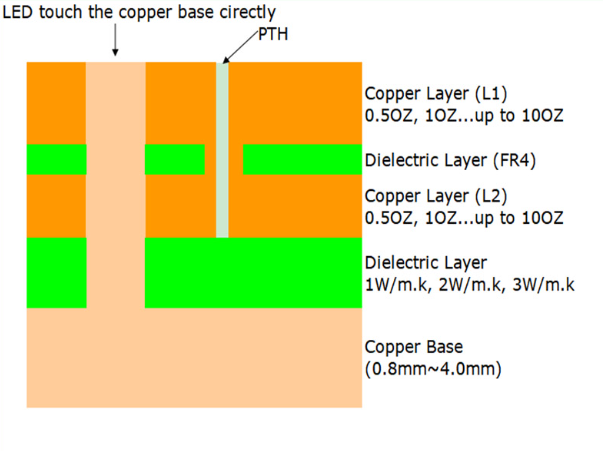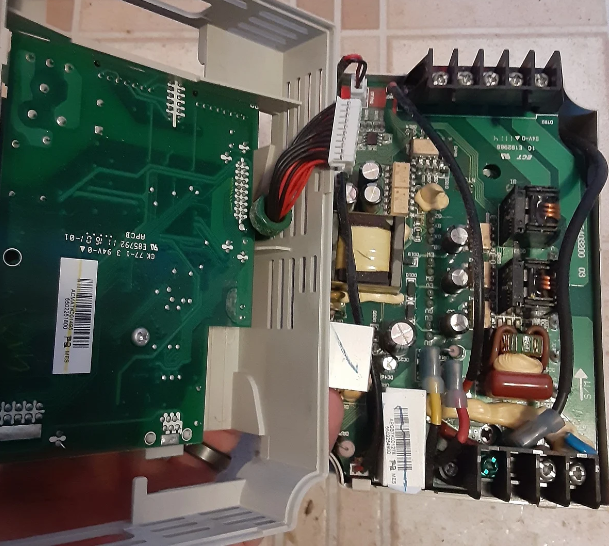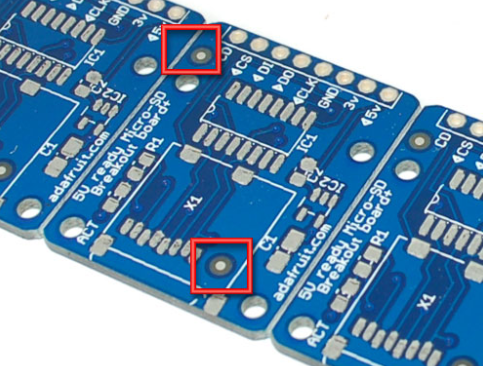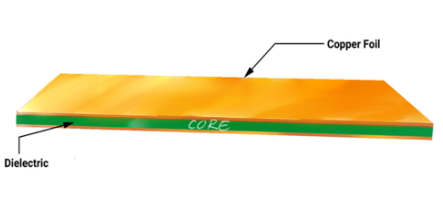Sinkpad pcb
Advantages Of Using Sinkpad PCB In High-Power Applications
Sinkpad PCBs, or Printed Circuit Boards, have emerged as a pivotal technology in the realm of high-power applications, offering a multitude of advantages that make them indispensable in various industries.
One of the primary benefits of using Sinkpad PCBs is their exceptional thermal management capabilities.
In high-power applications, managing heat dissipation is crucial to ensure the longevity and reliability of electronic components. Sinkpad PCBs are designed with a unique structure that allows for efficient heat transfer from the components to the heat sink, thereby reducing the thermal resistance and preventing overheating.
Moreover, the enhanced thermal performance of Sinkpad PCBs translates into improved overall efficiency of electronic devices.
By maintaining optimal operating temperatures, these PCBs help in minimizing energy losses and enhancing the performance of power-intensive applications. This is particularly beneficial in industries such as automotive, aerospace, and telecommunications, where high-power devices are commonplace and efficiency is paramount.
In addition to superior thermal management, Sinkpad PCBs offer excellent mechanical stability.
The robust construction of these PCBs ensures that they can withstand the mechanical stresses and vibrations often encountered in high-power environments. This durability is essential for applications that demand high reliability and long operational life, such as industrial machinery and renewable energy systems.
Furthermore, Sinkpad PCBs are known for their high current-carrying capacity.
The design of these PCBs allows for the accommodation of larger current loads without compromising the integrity of the circuit. This capability is particularly advantageous in applications that require the handling of substantial electrical currents, such as power supplies and motor drives. The ability to manage high currents effectively also contributes to the overall safety of the electronic system, reducing the risk of circuit failures and potential hazards.
Another significant advantage of Sinkpad PCBs is their versatility in design.
These PCBs can be customized to meet the specific requirements of various high-power applications. The flexibility in design allows engineers to optimize the layout and configuration of the PCB to achieve the desired performance characteristics. This adaptability is crucial in developing innovative solutions for complex electronic systems, enabling the integration of advanced functionalities and features.
Additionally, the use of Sinkpad PCBs can lead to cost savings in the long run.
The improved thermal management and reliability of these PCBs reduce the need for additional cooling mechanisms and frequent maintenance, thereby lowering operational costs. Moreover, the extended lifespan of electronic components facilitated by Sinkpad PCBs translates into reduced replacement costs and downtime, further enhancing the cost-effectiveness of high-power applications.
In conclusion, the advantages of using Sinkpad PCBs in high-power applications are manifold. From superior thermal management and mechanical stability to high current-carrying capacity and design versatility, these PCBs offer a comprehensive solution for the challenges posed by power-intensive environments. The benefits extend beyond performance improvements, encompassing cost savings and enhanced safety, making Sinkpad PCBs a valuable asset in the development and operation of high-power electronic systems. As technology continues to advance, the role of Sinkpad PCBs in high-power applications is likely to become even more significant, driving innovation and efficiency across various industries.

How Sinkpad PCB Enhances Thermal Management In Electronics
In the realm of modern electronics, thermal management is a critical factor that significantly influences the performance, reliability, and longevity of electronic devices. One innovative solution that has emerged to address this challenge is the Sinkpad PCB. This advanced printed circuit board technology is designed to enhance thermal management, thereby ensuring that electronic components operate within their optimal temperature ranges.
At the core of the Sinkpad PCB’s effectiveness is its unique construction, which integrates a metal core directly beneath the heat-generating components.
This design facilitates efficient heat dissipation by providing a direct thermal path from the components to the metal core. Consequently, the heat is rapidly conducted away from the components, reducing the risk of overheating and thermal damage. This is particularly beneficial in high-power applications where traditional PCBs may struggle to manage the thermal load effectively.
Moreover, the Sinkpad PCB employs a specialized dielectric layer that exhibits excellent thermal conductivity.
This layer acts as an intermediary between the metal core and the copper traces, ensuring that heat is efficiently transferred while maintaining electrical insulation. The combination of a metal core and a high-thermal-conductivity dielectric layer results in a PCB that can handle significantly higher thermal loads compared to conventional PCBs. This capability is crucial for applications such as LED lighting, power electronics, and automotive systems, where thermal management is paramount.
In addition to its superior thermal performance, the Sinkpad PCB also offers enhanced mechanical stability.
The metal core provides a robust foundation that reduces the risk of warping and mechanical stress, which can occur in PCBs subjected to high temperatures. This stability is essential for maintaining the integrity of the electronic components and ensuring consistent performance over time. Furthermore, the Sinkpad PCB’s construction allows for a more compact design, as the need for additional heat sinks and cooling mechanisms is minimized. This compactness is advantageous in applications where space is at a premium, such as in portable electronic devices and densely packed circuit assemblies.
Another significant advantage of the Sinkpad PCB is its ability to improve the overall efficiency of electronic systems.
By effectively managing heat, the Sinkpad PCB helps to maintain the optimal operating conditions for electronic components, thereby enhancing their performance and reducing energy consumption. This efficiency translates into lower operating costs and a reduced environmental impact, aligning with the growing emphasis on sustainability in the electronics industry.
The implementation of Sinkpad PCB technology also contributes to the reliability and durability of electronic devices.
By mitigating thermal stress, the Sinkpad PCB reduces the likelihood of component failure and extends the lifespan of the device. This reliability is particularly critical in applications where downtime and maintenance costs are significant concerns, such as in industrial automation and telecommunications.
In conclusion, the Sinkpad PCB represents a significant advancement in thermal management for electronic devices. Its innovative design, which integrates a metal core and a high-thermal-conductivity dielectric layer, provides superior heat dissipation and mechanical stability. These attributes not only enhance the performance and efficiency of electronic systems but also contribute to their reliability and longevity. As the demand for high-performance, compact, and energy-efficient electronic devices continues to grow, the Sinkpad PCB is poised to play a pivotal role in meeting these challenges and driving the evolution of modern electronics.
Comparing Sinkpad PCB To Traditional PCB Technologies
When comparing Sinkpad PCB to traditional PCB technologies, it is essential to understand the fundamental differences and advantages that each offers. Traditional PCBs, or printed circuit boards, have been the backbone of electronic devices for decades. They are typically composed of multiple layers of conductive copper and insulating materials, which are laminated together to form a solid, flat board. These layers are etched to create intricate pathways for electrical signals, allowing components to communicate and function as intended. However, as electronic devices have become more complex and power-dense, the limitations of traditional PCBs have become increasingly apparent.
One of the primary challenges with traditional PCBs is thermal management.
As electronic components generate heat during operation, it is crucial to dissipate this heat effectively to maintain performance and prevent damage. Traditional PCBs often rely on thermal vias and heat sinks to manage heat dissipation, but these methods can be insufficient for high-power applications. This is where Sinkpad PCB technology comes into play. Sinkpad PCBs are designed with an innovative approach to thermal management, integrating a metal core directly into the PCB structure. This metal core, typically made of aluminum or copper, provides a highly efficient thermal pathway, allowing heat to be conducted away from critical components more effectively than traditional methods.
Moreover, the enhanced thermal performance of Sinkpad PCBs translates into several tangible benefits for electronic devices.
For instance, improved heat dissipation can lead to increased reliability and longevity of components, as they are less likely to overheat and fail. Additionally, devices can operate at higher power levels without compromising performance, making Sinkpad PCBs particularly advantageous for applications such as LED lighting, power electronics, and automotive systems. Furthermore, the integration of the metal core can reduce the need for external cooling solutions, such as fans or heat sinks, resulting in more compact and lightweight designs.
In addition to thermal management, Sinkpad PCBs offer other advantages over traditional PCB technologies.
The metal core not only aids in heat dissipation but also enhances the mechanical strength of the PCB. This increased rigidity can be beneficial in applications where the PCB is subjected to mechanical stress or vibration, such as in automotive or industrial environments. Moreover, the manufacturing process for Sinkpad PCBs can be more streamlined, as the metal core can be integrated during the initial fabrication stages, reducing the need for additional assembly steps.
However, it is important to consider the potential drawbacks of Sinkpad PCBs when comparing them to traditional technologies.
One notable consideration is cost. The materials and manufacturing processes involved in producing Sinkpad PCBs can be more expensive than those for traditional PCBs. This cost difference may be a significant factor for applications where budget constraints are a primary concern. Additionally, the design and layout of Sinkpad PCBs can be more complex, requiring specialized knowledge and tools to optimize thermal performance and ensure proper functionality.
In conclusion, while traditional PCBs have served the electronics industry well for many years, the advent of Sinkpad PCB technology offers significant advantages in terms of thermal management, mechanical strength, and overall performance. These benefits make Sinkpad PCBs an attractive option for high-power and high-reliability applications. However, the potential increase in cost and design complexity must be carefully weighed against these advantages. As electronic devices continue to evolve and demand more efficient and robust solutions, the choice between Sinkpad and traditional PCB technologies will depend on the specific requirements and constraints of each application.

Design Tips For Optimizing Performance With Sinkpad PCB
When designing a Sinkpad PCB, optimizing performance is paramount to ensure the efficiency and reliability of the final product. Sinkpad PCBs are renowned for their superior thermal management capabilities, making them ideal for high-power applications. To fully leverage these benefits, several design considerations must be taken into account.
Firstly, understanding the thermal requirements of your application is crucial.
Sinkpad PCBs are designed to dissipate heat effectively, but the extent of thermal management needed will vary depending on the specific use case. Conduct a thorough thermal analysis to determine the heat dissipation needs of your components. This analysis will guide you in selecting the appropriate Sinkpad PCB configuration, ensuring that the thermal performance aligns with your design goals.
Next, consider the layout of your components.
Proper component placement is essential for optimizing thermal performance. High-power components should be strategically positioned to maximize heat dissipation. Placing these components near the Sinkpad area will facilitate efficient heat transfer away from the components, thereby enhancing their longevity and performance. Additionally, ensure that there is adequate spacing between components to prevent thermal interference and allow for effective heat dissipation.
Moreover, the choice of materials plays a significant role in the performance of Sinkpad PCBs.
The base material should have high thermal conductivity to facilitate efficient heat transfer. Copper is commonly used due to its excellent thermal properties. However, the thickness of the copper layer should be carefully selected based on the thermal requirements of your application. Thicker copper layers can handle higher thermal loads but may also increase the overall cost and weight of the PCB. Therefore, a balance must be struck between thermal performance and other design constraints.
In addition to material selection, the design of thermal vias is another critical aspect.
Thermal vias are used to connect the heat-generating components to the Sinkpad, allowing for efficient heat transfer. The number, size, and placement of these vias should be optimized to ensure maximum thermal conductivity. A higher density of thermal vias can improve heat dissipation but may also complicate the manufacturing process. Therefore, it is essential to work closely with your PCB manufacturer to determine the optimal design for thermal vias.
Furthermore, the use of thermal interface materials (TIMs) can significantly enhance the thermal performance of Sinkpad PCBs.
TIMs are used to fill the gaps between the heat-generating components and the Sinkpad, ensuring efficient heat transfer. Selecting the appropriate TIM is crucial, as different materials have varying thermal conductivities and mechanical properties. Conduct a thorough evaluation of available TIMs to choose one that best meets the thermal and mechanical requirements of your application.
Lastly, it is important to consider the overall design for manufacturability (DFM).
While optimizing for thermal performance is essential, the design should also be feasible for manufacturing. Collaborate with your PCB manufacturer early in the design process to identify potential manufacturing challenges and address them proactively. This collaboration will help ensure that the final design is not only thermally optimized but also manufacturable within the desired cost and time constraints.
In conclusion, optimizing performance with Sinkpad PCBs requires a comprehensive approach that considers thermal requirements, component layout, material selection, thermal vias design, and the use of thermal interface materials. By carefully addressing these factors and collaborating closely with your PCB manufacturer, you can achieve a design that maximizes thermal performance while meeting all other design and manufacturing constraints.





